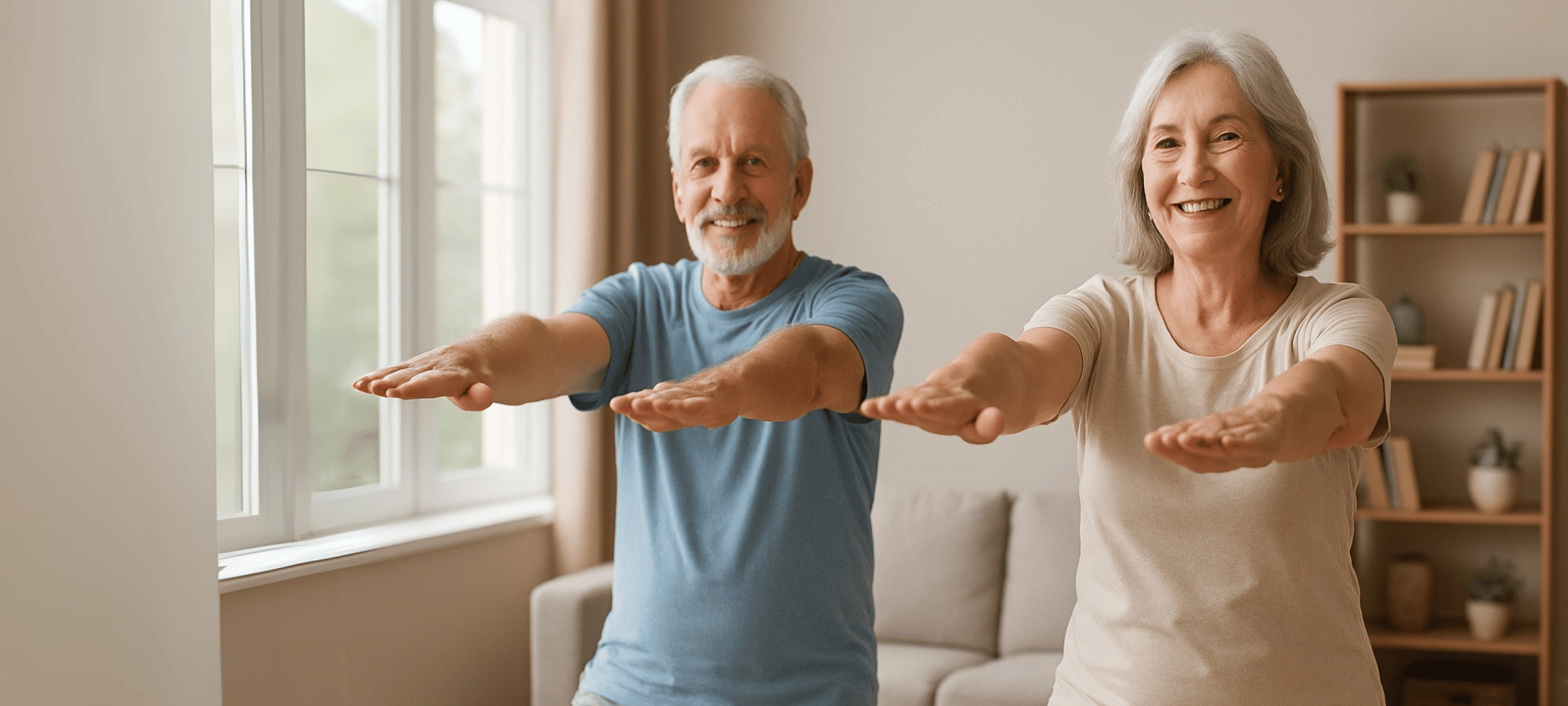Regaining Strength and Confidence: Rehabilitation for Age-Related Mobility Issues
Mobility challenges are among the most common concerns for older adults — and one of the most impactful on quality of life, which is why physiotherapy for senior mobility is incredibly important. As we age, it’s not uncommon for everyday tasks like climbing stairs, walking on uneven surfaces, or getting out of a chair to become more difficult. This gradual decline in a person’s ability to move or perform daily activities can significantly affect independence, mood, and physical health. But here’s the good news: rehabilitation and structured physical activity programs can help seniors stay active, reduce the risk of falling, and maintain mobility and independence well into later life.
Why Do Many Seniors Experience Mobility Issues?
After age 65, the body undergoes changes that can contribute to mobility problems. These include:
- Muscle weakness and loss of muscle strength (sarcopenia)
- Joint stiffness and pain, often due to arthritis
- Poor posture and reduced range of motion
- Slower reaction times and balance impairments
- Decreased heart and lung capacity
These factors not only affect mobility but also increase the risk of falling, which is a major cause of injury and hospital stays among older people. Seniors experience what some researchers call “mobility decline,” where several mild problems, such as joint issues, reduced flexibility, or a fear of falling, can collectively lead to a significant limitation in movement.
How Rehabilitation Helps Seniors Improve Mobility
Rehabilitation aims to restore a person’s ability to move around confidently and safely. For older adults, the goal is often to maintain or regain enough mobility to live at home, perform daily activities, and avoid a potential fall.
Physiotherapy and Occupational Therapy
A physical therapist or occupational therapist will perform a comprehensive assessment of strength, gait, posture, range of motion, and balance to develop an individualized plan. A customized exercise program will help improve joint flexibility, build strength, and address any functional deficits that affect mobility.
✅ Did you know? According to the American Physical Therapy Association, mobility problems may be improved with as little as 2–3 sessions per week of structured physical therapy.
Interventions to Improve Physical Function
Evidence-based rehabilitation includes multiple components designed to improve mobility and quality of life in elderly patients:
1. Strength and Balance Training
- Why it matters: Strength training helps combat muscle weakness, while balance exercises improve stability and reduce the risk of falling.
- Exercises include: Sit-to-stand drills, resistance band training, and single-leg balance practice.
- Outcomes: Many older adults who complete balance and strength programs are better able to maneuver through everyday tasks and reduce pain from joint conditions like arthritis.
2. Gait Retraining and Assistive Devices
- Why it matters: Gait changes can affect mobility and increase fall risk.
- What to expect: A physical therapist will make sure walking patterns are safe, prescribe appropriate assistive devices (e.g., walkers, canes), and help seniors regain a smoother, more confident stride.
3. Pain Management
- Why it matters: Pain, especially from arthritis or joint replacement recovery, can lead to reduced mobility and depressive symptoms.
- Interventions: Manual therapy, modalities like TENS, and exercise tailored to manage pain and inflammation help seniors stay active and avoid long-term care placement.
4. Functional and Home-Based Training
- Why it matters: Tasks like climbing stairs or rising from a low seat are crucial for maintaining independence.
- Home safety recommendations may also be made, including removing tripping hazards and improving lighting to avoid falls on uneven surfaces.
📈 Evidence check: A Cochrane review by Sherrington et al. (2019) found that exercise programs targeting balance and strength reduce fall risk by up to 23% in people aged 65 or older.
Addressing the Fear of Falling
Fear of falling is common, especially after a previous incident, and can lead to avoidance of physical activity, which in turn leads to reduced mobility. Rehabilitation helps break this cycle by:
- Educating seniors about safe movement strategies
- Building confidence through graded exposure
- Restoring physical function so that the person feels better able to maneuver in daily life
Who Should Consider Rehabilitation?
Rehabilitation isn’t only for people recovering from a joint replacement or hospital stay. It’s appropriate for:
- Anyone age 65 or older who is noticing limited mobility
- Older people experiencing joint stiffness, poor posture, or decreased endurance
- Those struggling with daily activities or feeling unsteady while walking
- Seniors with arthritis, balance problems, or depressive symptoms related to inactivity
Even many older adults who are currently active benefit from an annual mobility screening by a doctor or physical therapist to catch early signs of change.
How Physical Activity Helps Prevent Mobility Loss
Physical inactivity is a modifiable risk factor. In fact, physical activity interventions have been shown to:
- Reduce the risk of hospital stays and long-term care admissions
- Improve posture, joint mobility, and range of motion
- Support emotional well-being
- Enhance cardiovascular health and endurance
🧬 A 2020 study in the Journal of the American Geriatrics Society concluded that tailored exercise programs significantly improve physical function in older adults and reduce the rate of functional decline.
Tips to Maintain Mobility and Independence
- Engage in regular exercise, even low-impact activities like walking, Tai Chi, or swimming
- Incorporate strength and balance exercises at least twice a week
- Follow a physical activity program designed by a licensed physical therapist
- Review medications and health conditions with a healthcare provider regularly
- Assess home safety and remove environmental hazards
- Use assistive devices when needed — and learn proper use from a therapist
Final Thoughts: Aging Strong, Moving Well
Mobility is essential to independence, dignity, and well-being. While loss of mobility is common in older adults, it’s not a given — and it’s certainly not irreversible. Through rehabilitation, strength training, balance training, and proactive lifestyle changes, older people can maintain mobility, reduce the risk of falling, and stay active well into later life.
At any age, it’s possible to regain control of your movement, confidence, and freedom. A qualified physical therapist can help guide the way — ensuring every person’s ability to move around is supported, safeguarded, and celebrated. To learn more, reach out to the team at South Island Physiotherapy for treatment options and more support.
References
- Sherrington, C. et al. (2019). Exercise for preventing falls in older people living in the community. Cochrane Database.
- American Physical Therapy Association. (2022). Physical Activity and Aging.
- Giné-Garriga, M. et al. (2020). Effectiveness of physical activity interventions in preventing mobility limitations in older adults: A systematic review. Journal of the American Geriatrics Society.
- World Health Organization. (2021). Guidelines on physical activity and sedentary behaviour.

